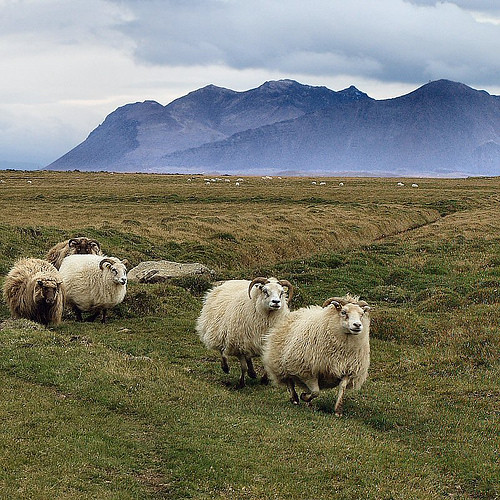
Follow the Leader
There are so many things that are happening at the moment ; I so wish it did not feel like we are living in a Pandemic world that is starting to resemble more like an episode from the “Walking Dead” or “The Handmaids Tale” or “Dead Zone” just t name a few, but I feel more and more that reality nowadays is stranger and scarier than fiction.
I wanted to start this update with upliftng exciting news of what I have been doing with my time, working hard to get a new blend to you, sharing a new and exciting fun idea for all of us for the next two months but instead I feel like that last bit of fun needed to wait til next week. Now, is not the right time. Instead, NOW is the time to think about diversity and acceptance and compassion.
I want to take this opportunity to give my respect and love to those who have suffered and those that are suffering still, from the unbridled stain on humanity that is racism.
What has baffled me more than ever, is the fact that somehow in the last few years, far right, Nazi and Ku Klux Klan fans have proudly come crawling out. If ever we thought that racism was this subliminal thing that was almost over: it most definitely is not and what is happening now , the protests and the voices being heard again and again of BIPOC , show that we are far , very far, from having equality and justice for all. Probably because those in Power are not at all interested in creating a peaceful environment where all can flourish.
Why, I hear you thinking, is this so important to her? Well, I have seen and felt discrimination because of my mum, with her black hair and dark skin. Her native American genes very obviously showing.
I noticed the difference in how people treated her or treated me from a very early age. My skin was much lighter and my hair was brown; I was treated differently. She was always questioned and watched. Continuously under scrutiny. Continuously treated either as an exotic on the one hand or not taken seriously or threatened on the other. The fact that she was treated differently by those in power. and, when she did speak up to ask for justice, it was swiped away as trivial and she should be respecting others not the other way around.
So yes, I feel very strongly about what is still happening at the moment. I am sorry that these terrible acts of racism are still allowed to happen. I am sorry for the fear that still lives to strongly in peoples’ hearts and minds. I am hoping that things will change. But, things can only become better for all of us, when we keep educating ourselves, opening our minds, listen and BE the change the world so desperately needs.
Read some books about fighting white supremacy: https://www.readings.com.au/collection/books-to-help-you-understand-and-fight-white-supremacy Read some fiction by Indigenous authors: https://www.readings.com.au/collection/indigenous-australian-fiction Watch the First Australians on SBS, it’s free and it’s excellent: www.sbs.com.au/ondemand/program/first-australians
I promised you on last week’s update that June and July were going to be huge months !!! I was not kidding!!! Since all the Yarn and Wool shows this year have been cancelled, I still would love to offer you some of the super special blends I have been working on! Every year for the Bendigo Sheep and Wool show for example, I prepare lots of special rare sheep breed blends and rare fibre blends. I wanted to keep that up for as much as possible and so I am starting the first update of June off by offering you Icelandic Leadersheep blend tops. These sheep are amazing, and I have compiled some photos for you below as well as two videos for you to watch with lots of information. It is extremely lucky that I have been able to receive a few of my rare sheep and rare breeds before the pandemic hit! Otherwise this would be totally impossible! I work year-round to try and get my hands on rare fibres to blend, process and dye. It takes months and sometimes years to get blends like this done. Not only because of the paperwork and tracking down of good fibre stock, talking to farms etc, but also the actual blending of it all, trying to create a blend that is awesome to spin and wear. It is something that can’t be done in a few weeks that’s for sure..lol
I wanted to start this update with upliftng exciting news of what I have been doing with my time, working hard to get a new blend to you, sharing a new and exciting fun idea for all of us for the next two months but instead I feel like that last bit of fun needed to wait til next week. Now, is not the right time. Instead, NOW is the time to think about diversity and acceptance and compassion.
I want to take this opportunity to give my respect and love to those who have suffered and those that are suffering still, from the unbridled stain on humanity that is racism.
What has baffled me more than ever, is the fact that somehow in the last few years, far right, Nazi and Ku Klux Klan fans have proudly come crawling out. If ever we thought that racism was this subliminal thing that was almost over: it most definitely is not and what is happening now , the protests and the voices being heard again and again of BIPOC , show that we are far , very far, from having equality and justice for all. Probably because those in Power are not at all interested in creating a peaceful environment where all can flourish.
Why, I hear you thinking, is this so important to her? Well, I have seen and felt discrimination because of my mum, with her black hair and dark skin. Her native American genes very obviously showing.
I noticed the difference in how people treated her or treated me from a very early age. My skin was much lighter and my hair was brown; I was treated differently. She was always questioned and watched. Continuously under scrutiny. Continuously treated either as an exotic on the one hand or not taken seriously or threatened on the other. The fact that she was treated differently by those in power. and, when she did speak up to ask for justice, it was swiped away as trivial and she should be respecting others not the other way around.
So yes, I feel very strongly about what is still happening at the moment. I am sorry that these terrible acts of racism are still allowed to happen. I am sorry for the fear that still lives to strongly in peoples’ hearts and minds. I am hoping that things will change. But, things can only become better for all of us, when we keep educating ourselves, opening our minds, listen and BE the change the world so desperately needs.
Read some books about fighting white supremacy: https://www.readings.com.au/collection/books-to-help-you-understand-and-fight-white-supremacy Read some fiction by Indigenous authors: https://www.readings.com.au/collection/indigenous-australian-fiction Watch the First Australians on SBS, it’s free and it’s excellent: www.sbs.com.au/ondemand/program/first-australians
I promised you on last week’s update that June and July were going to be huge months !!! I was not kidding!!! Since all the Yarn and Wool shows this year have been cancelled, I still would love to offer you some of the super special blends I have been working on! Every year for the Bendigo Sheep and Wool show for example, I prepare lots of special rare sheep breed blends and rare fibre blends. I wanted to keep that up for as much as possible and so I am starting the first update of June off by offering you Icelandic Leadersheep blend tops. These sheep are amazing, and I have compiled some photos for you below as well as two videos for you to watch with lots of information. It is extremely lucky that I have been able to receive a few of my rare sheep and rare breeds before the pandemic hit! Otherwise this would be totally impossible! I work year-round to try and get my hands on rare fibres to blend, process and dye. It takes months and sometimes years to get blends like this done. Not only because of the paperwork and tracking down of good fibre stock, talking to farms etc, but also the actual blending of it all, trying to create a blend that is awesome to spin and wear. It is something that can’t be done in a few weeks that’s for sure..lol
I cannot emphasize enough how important it is to support small farms and rare breeds: for the future of diversity and rare breeds it is always a choice between how lucrative an endeavor is. However, I think it is always important to see a rare breed survive not because it has a specific commercial value but how much we would lose not to invest in its survival. If we think humans are smart enough to make an educated choice, then why are so many breeds extinct just because humans choose to work more "lucratively"? Stories will be lost...and that, in my book, is not smart at all: it is depriving future generations of wealth that can never be recovered.
To organise and prepare all these rare sheep breed adventures can sometimes turn into a quest and a mission and this one is one of them for sure! There was a lot of organisational skill and sleuthing fit for a Lord of the Rings Trilogy required to get to this point.
There are not many wild or domesticated local animals in Iceland, but the wildlife and farm animals Iceland do have are very special. There are more Icelandic sheep in Iceland than people, and some farmers own nearly a thousand sheep of their own. The extensive farm land around Iceland's coast is full of them, and every summer they roam the highlands and mountains freely. They're tough, sturdy little animals, and grow lots of fluffy white wool that they use to make all their woollen goods from, also called LOPI wool.
Icelandic sheep are a breed that has remained virtually unchanged for over 1,000 years, maybe the oldest and most genetically pure sheep breed in the world. Modern Icelandic sheep descend from sheep ferried by Vikings to Iceland during the 8th and 9th Centuries. Attempts to “improve” the breed by outcrossing generally resulted in increased vulnerability to disease, and so raisers on this island nation decided to keep their selective breeding attempts confined within the breed.
The Icelandic sheep is an ancient North European breed, slightly smaller than modern varieties, whose double-layered coat is uniquely suited to cold and wet conditions. The inner layer, or thel, is insulating, superlight and very airy, while the outer layer, or tog, is long, strong and water repellent. Carded together, these two layers make lopi, versatile wool used to knit lopapeysa, the distinctive traditional Icelandic sweater.
Wool from the spring shearing is coarse and generally used to make carpets, while prized lopi wool comes from the autumn shearing.
The country only has one industrial spinning mill, Ístex, which is co-owned by a cooperative comprised of 1,800 sheep farmers ! Yes. a Co-OP ! It can be done ! From about 1,000 tonnes of raw fibre, the mill produces about 454 tonnes of handknitting and felting wool—about 60 per cent is sold domestically.
A few weeks after the lambing in May, sheep are sent to run free and graze in mountain pastures until autumn, feeding on the rich and nourishing vegetation. Many farmers formerly allowed their sheep to graze in outlying pastures over the summer months, but as a result of the recent reduction in flocks, animals are increasingly kept on home pastures.
Farmers gather their flocks in the autumn. Usually, the round-up is carried out on horseback with assistance of sheepdogs.
The process can take up to a week. During this time, participants stay overnight in mountain huts located throughout the highlands. Each sheep farmer has his own earmark in order to identify his livestock. After the gathering, the sheep are all sorted into designated pens, according to earmarks. Many people, farmers or not, come to watch or take part in this event on the last day, which is usually followed by a big celebration the same night. This is a tradition cherished by Icelanders.
Icelandic sheep are a beautiful and eye-catching breed of sheep with incredible colour variations and seventeen possible combinations of colours and patterns. Known around the world for their fibre, the Icelandic sheep provides a soft, lustrous dual coated fleece. Icelandic sheep come in a range of natural colours and patterns which provide lovely wool that is very versatile and easy to spin, making this wool a handspinners delight.
Like I said before, Icelandic fleece is dual-coated. In Icelandic the long outer coat is called tog and the fine inner coat þel. When separated, the outer and inner coats are used for different woolen products.
Tog is generally classified as a medium wool around 27 micron. It is good for weaving and other durable products.
Thel, being the finer wool and classified as such, is generally around 20 micron. Tog and Thel are processed together to produce lopi, a distinctive knitting wool that is only made from the fleece of Icelandic sheep. This process of combining medium or coarser wool fibres together with soft fibres is what I have been doing for as long as I can remember (angorino:superfine merino+angora and ofcourse the Churro with angora,) and professionally, for about 11 years now with many other different kind of blends that adhere exactly to that prinisple. And this Icelandic process just proves the point I have been trying to make for years and sometimes made me feel like Don Quixote battling windmills: it creates a durable close to skin yarn and lovely to work with.
This Icelandic adventure however has a sheep in focus that not many people know about.
Every farmer on Iceland may have one or two or a maximum of say 10 of these animals in their flock. Not more. All in all there are about 1500 Forystufe sheep in existence today and that is one of the reasons why this rare sheep breed adventure was so hard to organise..obviously.
What are “Forystufe” I hear you say? Well, they are also called Icelandic Leader Sheep. The Icelandic leader sheep is a separate line within the Icelandic breed of sheep .
The Leader sheep were probably brought to Iceland together with other sheep at the time of settlement in the 8th and 9th century. The sheep are lightly built with long legs and not as heavy as the Icelandic sheep, but otherwise similar. The leader sheep are known for their leader characteristics and a specific sense of directions, that were highly valued traits under the extensive farming conditions in Iceland in earlier times.
The leader sheep were used to bring the flock home in bad weather during winter grazing and they are still used to lead the flock when sheep are moved to and from summer pastures. The leader sheep are now a small population of around 1,500 purebred adult sheep that are spread between many flocks, with a few leader sheep on each farm. Leader rams have been kept at the AI stations in Iceland since 1981 as an aid to the conservation of the leader sheep.
They are known best for their leadership characteristics. Many old stories tell how people and sheep have been lost in the Icelandic Highlands and Icelandic storms but were rescued and brought to safety by these special sheep. They remain calm, walk in front of the flock, and are alert to any impending danger. They will even bring the sheep down early if they sense danger.
A special gene pool keeps these sheep with outstanding leadership abilities alive: These sheep are only bred to each other to keep the genetic tendencies strong. They are highly intelligent. Their sense of direction and ability to forecast impending bad weather are uncanny. The leadersheep are used when the farmers move the sheep from the home pastures up to the summer grazing area and then back home again before winter. Leader-sheep are more primitive than the modern Icelandic sheep. No comparable sheep are found elsewhere in the world !
Here are some photos of beautiful Iceland and its’ Leader sheep :
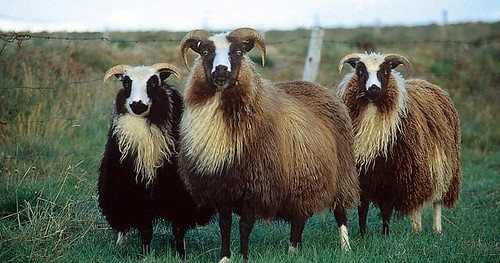
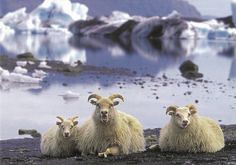
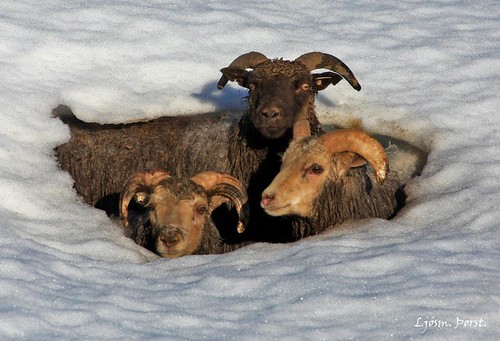

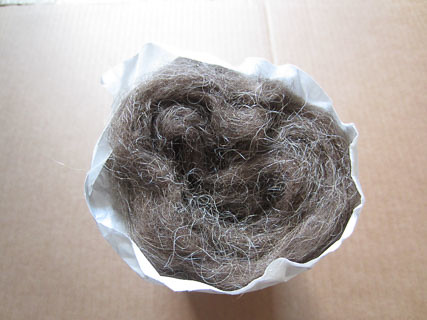

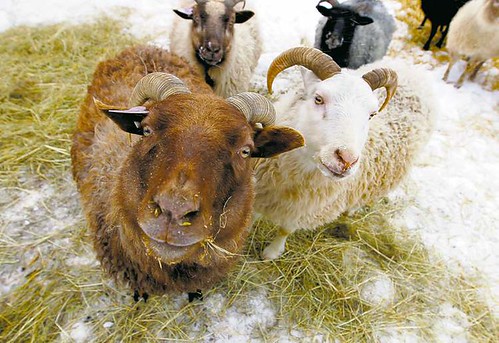


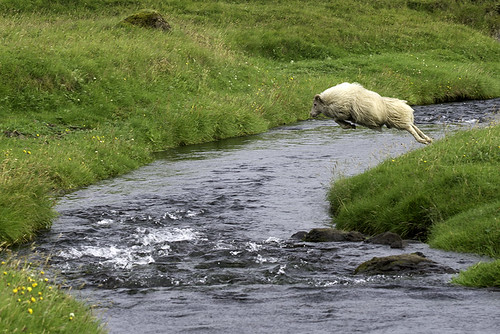
Here are two videos for you to watch :
As the name implies, these sheep were leaders in their flocks. Through the centuries they have played a very important part in survival in Iceland. The geographical location of the country makes habitation difficult, and, especially during winter, the weather is extremely changeable and often dangerous for both humans and animals.
With a growing season of only three months, hay was usually in short supply for most farmers until the middle of this century when modern farming methods increased hay yield. Animal and human survival often depended on a considerable amount of winter grazing of the sheep, which often were the only livestock a farmer had. The sheep flocks were usually driven by the shepherds several kilometres from the farm to the pastures where they scraped the snow to find whatever vegetation was available. Often the shepherds were just children from twelve years old and sometimes they had to stay with the sheep during the day. It was a tough life that required both ingenuity and strength.
The leadersheep had many qualities that made them special. Often they were very tame and loved humans, but always the other animals in the flock followed them blindly with a complete trust. The shepherd also trusted the instincts of these sheep and that trust often saved humans and sheep from certain death.
The leadersheep usually had an acute sense of the weather. They could sense change on the way often a whole day before a deadly blizzard hit. In these instances they often refused to leave the barn to go on pasture. If the weather was good and going to stay that way the leader usually was the first sheep out in the morning. If, on the other hand, the leader stayed in the barn, not to mention if they refused to leave, it indicated bad weather. Woe the shepherd who ignored the forecast of their leadersheep.
Often, when the weather appeared good, the leader and the whole flock was forced out. In these cases the leader usually did his best to stop the flock or at least tried to delay the driving. Then on pasture they usually did not graze but stood alert and at the first sign of weather change, they rounded up the flock and headed home. The weather in Iceland is extremely changeable and often it takes less than an hour to change from sunshine to raging blizzard. In many cases when flocks were caught in that kind of a situation the leader found the way home even though the shepherd was totally lost. The shepherd trusted the ability of the sheep to find the way. A good leader would go home as fast as possible, though never faster than a speed which allowed all of the sheep to keep up. Some of the leaders were exceptionally good at finding ways over treacherous ground where the whole flock could follow. The same applied to finding fording places across rivers. Some were good at finding good places to graze in the winter. But all had an amazing ability to find their way home. Many could be trained to follow signs from the shepherd, not unlike a good dog can. Many stories are told about instances where farmers had difficulty in getting skittish sheep from one place to another. Then the leader was sent off and usually the difficult sheep followed him without hesitation.
The leadership ability runs in bloodlines and is equal in males and females. There were farmers who bred leader sheep and these were usually priced two or three times over what good sheep traded for. Bloodlines even became famous for their ability and were sought after. I have been told that leader sheep are often taller than other sheep, and often they do not have what one would call prime meat conformation. When in a flock of other sheep they can often be spotted since their heads are raised higher than others. They are usually very alert. .
During the eradication of maedi/visna (OPP) in Iceland earlier this century many feared that the leader sheep bloodlines would be wiped out. Around that time farming methods were also changing, making winter grazing unnecessary and thereby lessening the need for relying on the leader sheep. That prompted Asgeir Jonsson, a prominent sheep farmer at that time, to collect stories about leadersheep. Those stories were published in a book called "Leader sheep" (Forystufe) in 1953.
Svinavatns Surtur (Leader ram Surtur from Svinavatn)
This happened in the fall roundup in 1884. A large flock of sheep had been gathered deep in the interior and a days drive over a mountain desert was ahead. In the morning, when the drive was to start a snowfall had begun and the weather was very dubious.
Shortly after leaving the previous nights resting place a raging blizzard hit. It was so furious that the drivers lost sight of all landmarks and could not find their way over the plains. To put up tents was impossible on the rocks and sand and turning back was questionable. It was known that Surtur, already recognized as a superior leader, was leading the flock. He had led the sheep steadily, but never faster than so that all the sheep could follow. Under these circumstances, the Mountain King (the leader of the men) decided to leave it to Surtur to lead everybody to safety, and firmly instructed his men to stick together.
When about one third of the trek over the plains was completed, Surtur stopped suddenly and came back to the men, who were behind the sheep flock. They immediately saw that Surtur's face was so covered with ice and snow that he could not see. After they had cleared his face he resumed his leading, facing the blizzard. For hours they moved steadily without any incidents except Surtur came back several times to have his face cleared.
Suddenly Surtur stopped and refused to go any further. The men found that grass was under their feet and therefore knew that they were out of the snow plains, but where they were no one knew. It was decided to stop there and put up tents, even though it was unpleasant. At dawn the blizzard abated somewhat and then the men realized that they were at the very spot where they usually stopped after crossing the sands. Every year, since Surtur was a lamb he had stopped there at this stage in the roundup. He had known exactly where to go even when the experienced and seasoned men had lost their way. When the Mountain King returned Surtur to his owner he said, that had it not been for Surtur's lead over the snow plains, several men and sheep would likely have died or suffered seriously from exposure. -This is only one of several stories of Surtur.
Kraga (leader ewe named Kraga).
In 1953, when the book "Leadersheep" was published, Kraga was still alive, born in 1944. Ten pages are devoted to several stories of Kraga. She was white, tall and a beautiful ewe. She was a leader right from her first winter.
This story is told by Kraga's owner: "One the 10th of December 1950 one of those North Atlantic blizzards hit. I had not yet taken my sheep in on hay but grazed them on the seashore not far from the farm. The evening before the blizzard I walked to my barn and was surprised to find Kraga standing by herself way back in the barn. Seeing this I decided to just catnap that night and be prepared for a weatherchange. Up to then the weather had been just fine.
At five o'clock in the morning I heard the roar from the sea and the blizzard. I rushed out and managed, with difficulty, to get the ewes from the shore. A few minutes later and it would have been too late. I also managed to call my neighbour and warn him, otherwise he would have lost several sheep. Later that winter, in early March, the weather had been good for a few days so I drove my sheep towards the mountains during the day. In the afternoon Kraga led the whole flock past the farm down to the shore where they spent the nights. One day, I was standing by the barn when Kraga came by with her flock. But instead of running past me as she usually did, she turned off the track and came directly to me. Naturally I stopped the flock and took them in on hay.
That night another killer blizzard hit".
Farmers in Iceland do not use winter grazing any more. The need for leadersheep is not the same as it used to be .
The Icelandic Leadersheep have a wonderful dual coat, similar to the Icelandic sheep , but I have found their fine undercoat to be thicker and more abundant than in the Icelandic sheep.
The Icelandic leadersheep are genetically more ancient than the Icelandic sheep that have been bred more and more to be a more “lucrative” triple purpose breed: wool, meat and milk. The Leadersheep however has a totally different way of storing fat: unlike the Icelandic sheep it does not store its fat in its meat. It is extremely lean.
The milk production of leadersheep are triple that of Icelandic sheep. Because leadersheep have been cherished for their smart and leadership qualities, since they were brought to Iceland in the times of the Vikings, they have been bred only with other leader sheep.
Deemed unimportant to keep for meat purposes but more for their leadership capabilities, their milk production and their wool, may have kept this rare sheep breed safe from extinction.
For this Iceland Adventure I offer you a unique chance to spin or felt your own smart sheep yarn.
Stay safe, stay connected and please, do not forget to have fun ! Please let message me if you have any questions okay? Always happy to help and enable !
Here’s this weeks update . Email me , message me on facebook, Instagram or on Ravelry if you want to spin or felt some of these amazing fibres.
IxCHeL Icelandic Leadersheep Blend Tops
100 grams AU$28
Icelandic Leadersheep, Cashmere, Angora, White Eri Silk

 Natural
Natural
-sold-

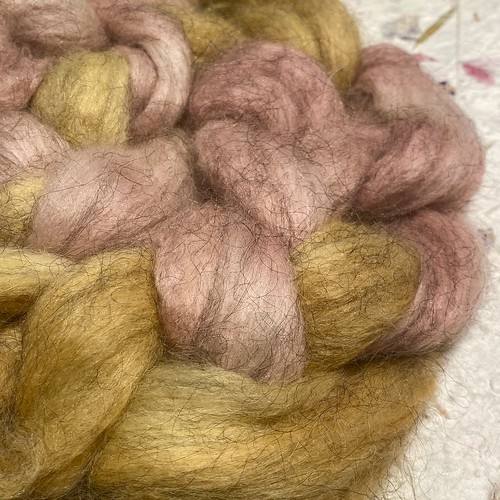 Sunshine and Roses-sold-
Sunshine and Roses-sold-

 Roses-1 left, goes VERY well with sunshine and roses :-) ! -sold-
Roses-1 left, goes VERY well with sunshine and roses :-) ! -sold-

 Thingvellir -sold-
Thingvellir -sold-
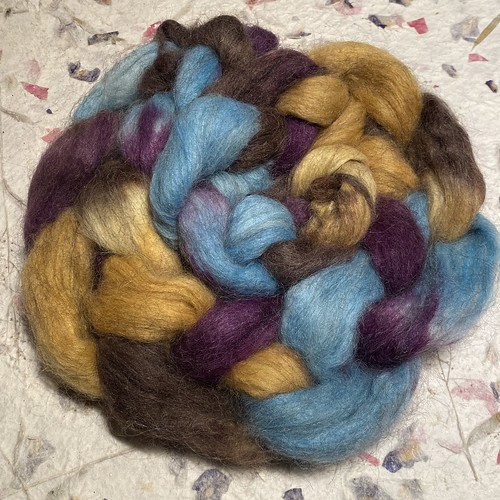
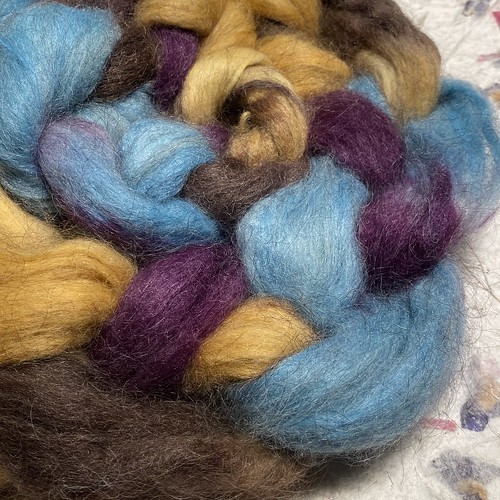 Thor’s Hammer-sold-
Thor’s Hammer-sold-
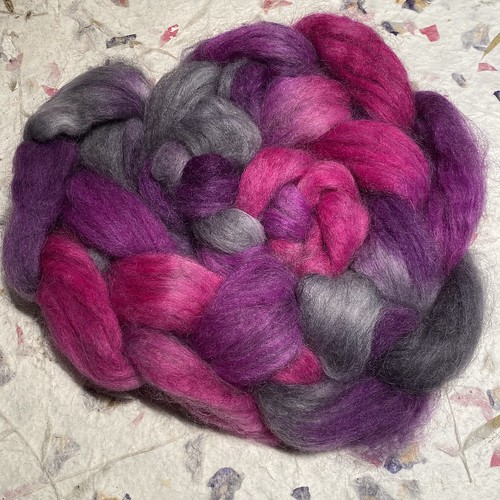
 Purple People Eater-sold-
Purple People Eater-sold-

 Indigo-sold-
Indigo-sold-

 Sunshine and Roses-sold-
Sunshine and Roses-sold-
 Roses-1 left, goes VERY well with sunshine and roses :-) ! -sold-
Roses-1 left, goes VERY well with sunshine and roses :-) ! -sold-
 Thingvellir -sold-
Thingvellir -sold-
 Thor’s Hammer-sold-
Thor’s Hammer-sold-
 Purple People Eater-sold-
Purple People Eater-sold-
 Indigo-sold-
Indigo-sold-
 Peacock Party-sold-
Peacock Party-sold-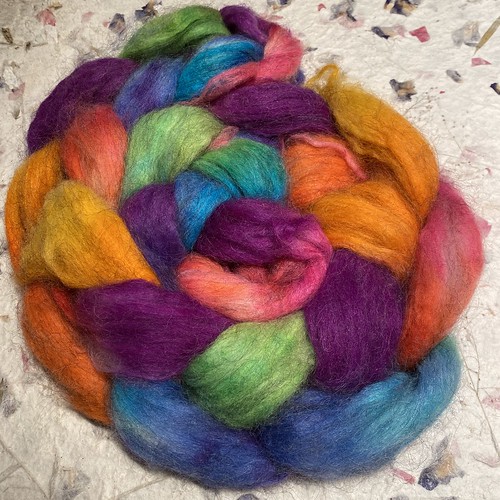
 Rainbow Magic-sold-
Rainbow Magic-sold-
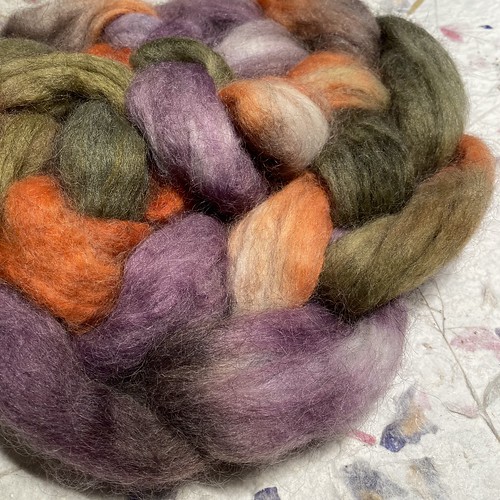 Pumpkin Patch-sold-
Pumpkin Patch-sold-IxCHeL club sign ups are open !
Note to all International club members:
All international club parcels are now being shipped with tracking and expedited. There is an option if you want all three of your clubs to be shipped together to save on shipping cost:
just ask me for a postage quote !
IxCHeL Fibre Club July, August and September 2020
The subscription is for a period of three months and you will receive one special hand dyed and special blended top/roving per month
All the tops will be hand dyed and will be especially made for the members of IxCHeL Fibre Club ! Price to join the IxCHeL Fibre Club #44 and receive your special hand dyed top :)) for three months (July, August and September 2020) is AU$78 + postage (parcel post or airmail). AND there are good value double and triple serves available !!!
For Australia : single serve $78+$30 postage (parcel post), double serve $150(save $6) +$30m postage or triple serves $225 (save $9!) + $30 postage
For New Zealand : single serve $78+$45 postage (parcel post) double serve $150(save $6) +$45 postage
For New Zealand : single serve $78+$45 postage (parcel post) double serve $150(save $6) +$45 postage
For USA + Canada: single serve AU$75+AU$60 (Airmail) double serve AU$150+AU$60; triple serve $225 (save $9) + AU$60postage
For UK,Europe, rest of the world: Single serve AU$78+AU$72 (airmail) Double serve AU$150+AU$72; triple serve $225 (save $9) + AU$72postage
For Asia: Single serve AU$78+AU$57 (airmail) Double serve AU$150+AU$57; triple serves $225 (save $9) + AU$57postage
If you want to receive a fibre surprise every month then join the IXCHEL FIBRE CLUB #44 now. Numbers are strictly limited ! The July 2020 Club is going to be shipped out end of July. the August club mid August and the September club early September. Payment via direct deposit or credit card or paypal. Just PM or email me your details.
The IxCHeL Yarn Clubs July, August and September 2020
Every month for three months (July, August and September 2020) you will receive: enough hand dyed luscious yummy yarn to make a pair of socks or a lush shawl or scarf of course! (the hand dyed yarn will be exclusive for the Ixchelbunny SOCK-IT-TO-ME Yarn CLUB and will range from a sockweight yarn (a 4ply/fingering weight yarn); Every month a sock or scarf pattern, tips and instructions ! Now is that GOOD or is that GOOD ??!
I will even offer a double serve for those of you who like their socks or scarves extra long !
For Australia : single serve $96+$30 postage (parcel post) double serve $177( save $15!!) +$30 postage
For New Zealand : single serve $96+$45 postage (parcel post) double serve $177( save $15!!) +$45 postage
For USA + Canada: single serve AU$96+AU$60 (Airmail) double serve $177 (Save $15!!) +AU$60
For New Zealand : single serve $96+$45 postage (parcel post) double serve $177( save $15!!) +$45 postage
For USA + Canada: single serve AU$96+AU$60 (Airmail) double serve $177 (Save $15!!) +AU$60
For UK,Europe, rest of the world: Single serve AU$96+AU$72 (airmail) Double serve $177 (Save $15!!) +AU$72
For Asia: Single serve AU$96+AU$57 (airmail) Double serve $177 (= Save $15!!!) +AU$57
Numbers are strictly limited !
Payment via direct deposit or credit card or paypal . Just PM or email me your details
By the way: you don’t HAVE to knit socks if you don’t want to.. the hand dyed yarn is amazingly nice for scarves, cowls, beanies and even tops ! Anything goes . The July2020 Club is going to be shipped out end of July, the August club mid August and the September club early September. Payment via direct deposit or credit card or paypal. Just PM or email me your details
IxCHeL Funky Bunny Batt Clubs July, August and September 2020
Here are all the details. Just pm me when you have any questions or want to be part of the funky bunny batt club Movement ;-) Welcome to the blingy dark side ;-D
The subscription is for a period of three months and you will receive one special hand dyed funky bunny batt per month to the value of AU$40 or more .
The batts will range in weight from 140grams to 170grams with luxury fibres like camel , angora, cashmere, silk, yak, llama even wallaby and bison and rare sheep breeds !!!! All the batts will be hand dyed and will be especially made for the members of IxCHeL funky bunny Club ! Every month you will receive a HUGE luxury funky bunny batt !
Sign up now and you will receive an IxCHeL Hand dyed , super luxurious funky bunny batt for July, August and September 2020
Price to join the IxCHeL Funky bunny for three months is :
For Australia : $114+$30 postage (parcel post)
For New Zealand : single serve $114+$45 postage (parcel post)
For USA + Canada: AU$114+AU$60 (Airmail)
For New Zealand : single serve $114+$45 postage (parcel post)
For USA + Canada: AU$114+AU$60 (Airmail)
For UK,Europe, rest of the world: AU$114+AU$72 (airmail)
For Asia: AU$114+AU$57 (airmail)
If you want to receive a fibre surprise every month then join the IXCHEL FUNKY BUNNY BATT CLUB now.
Numbers are strictly limited !
The July 2020 Club is going to be shipped out end of July, the August club mid August and the September club early September. Payment via direct deposit or credit card or paypal. Just PM or email me your details.
To become a member just email me on ixchelbunnyart at gmail dot com or message me on facebook or Instagram. More on how to order the clubs and anything from this update later in the blog in the section “how to order”
To order: email or message me on facebook, Ravelry or Instagram, quoting the colourway and the quantity you would like, together with your postal address and I will get right back to you with all the payment details.
Woad, Japanese Indigo Dye seed packs
At the moment I have three dye seeds available:
Woad, Japanese Indigo and True Indigo.
Please note that due to quarantine restrictions I have been advised not to ship to Western Australia, Tasmania or overseas.
Woad, Japanese Indigo and True Indigo.
Please note that due to quarantine restrictions I have been advised not to ship to Western Australia, Tasmania or overseas.
Woad seed packs are $7
Japanese Indigo seeds are $8
both come with planting instructions and a recipe to make your own dye bath!
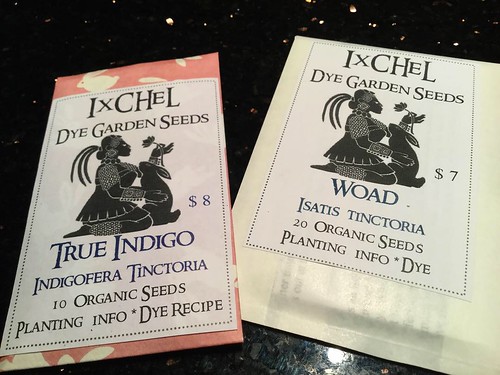
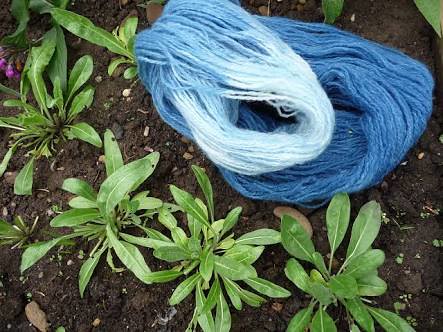 beautiful woad plants getting bigger !
beautiful woad plants getting bigger ! 
To become a member just email me on ixchelbunnyart at gmail dot com or message me on facebook or Instagram. More on how to order the clubs and anything from this update later in the blog in the section “how to order”
IxCHeL Aran Tweed Yarn
I have two colourways available at the moment: Both with the most colourful speckles and pops of colour you can think of and both in pure wool, spun with lots of love
50 grams AU$16 , appr 80 meters per skein.

IxCHeL Aran Tweed Coral Sea

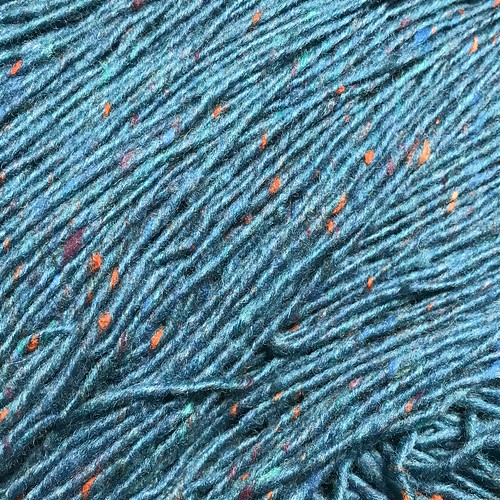
IxCHeL Aran weight Tweed Coral Sea with bright pops of colour
 |
| IxCHeL Aran Tweed Coral Sea |

IxCHeL Aran Tweed Opal


IxCHeL Aran weight Tweed Opal with bright pops of colour
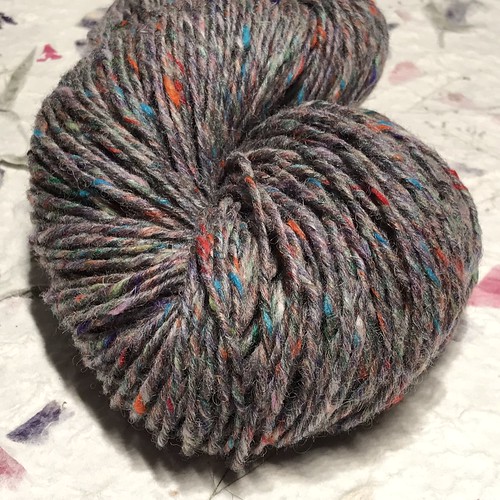
IxCHeL Tweed fingering weight yarn
Super soft lambswool 70% and Kid Mohair 30%
Spun singles, fingering or sock weight yarn
+/- 200meters/218yards
50grams 1.76oz
AU$16
NEW Colours !!!

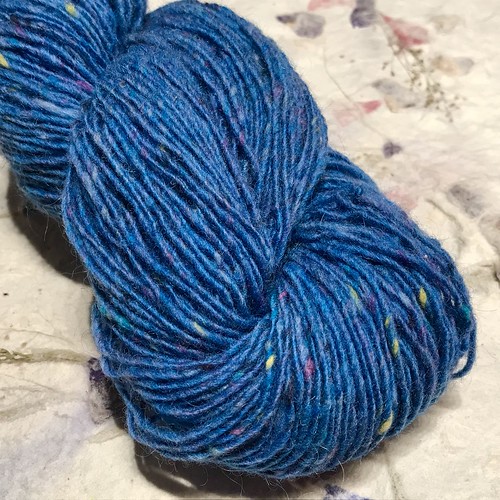
Great Barrier Reef




Leafy Seadragon




Flying Fox




Airlie Beach




Sea Mist




Amethyst


 Kata Tjuta
Kata Tjuta
(an intense pure red that goes well with the Kookaburra and the Wattle and the Amethyst colourway and soooooomany others)

 Kookaburra
Kookaburra
(a beautiful silver grey with ochre accents that complement the dingo colourway)

 Dingo
Dingo
( A beautiful warm honey ochre with pops of royal bluebell, kingfisher and kangaroo paw)

 Grevillea
Grevillea
(a gorgeous raspberry base with pops of royal bluebell, flowering gum, grey and daintree)


 Fern Forest
Fern Forest
( a deep forest green with accents of bright red, dusky purple and daintree) )

 Jacarandah
Jacarandah
( a fabulous deep purple with accents of royal bluebell, daintree, grevillea and kingfisher )

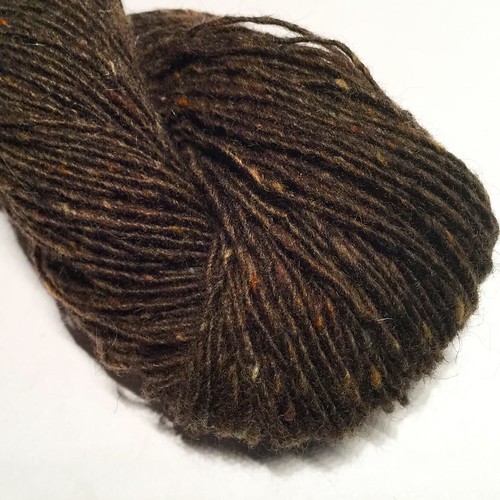 Wombat
Wombat
( a fabulous deep walnut brown with accents of dingo and kookaburra)

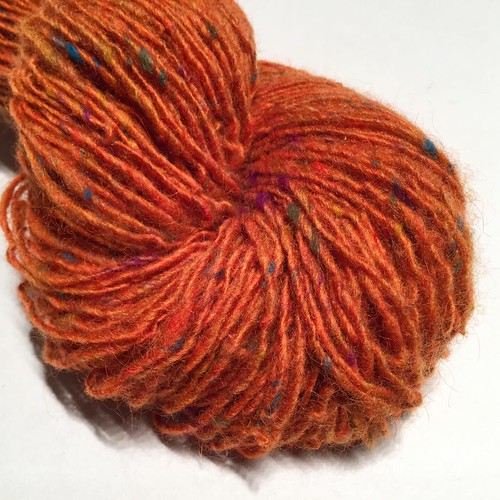 Kangaroo Paw
Kangaroo Paw
( a fabulous warm orange with accents of fern forest, royal bluebell and grevillea and dingo )


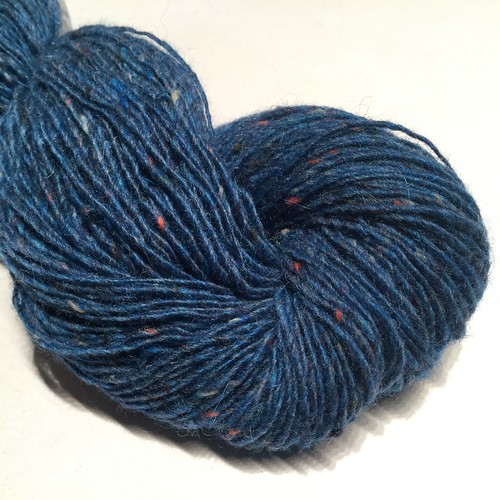 Royal Bluebell
Royal Bluebell
( a deep blue with accents of flowering gum, kookaburra and fern forest )

 Wallaby
Wallaby
( a warm light brown with accents of soft blue and kookaburra)

 Daintree ( a soft green with accents of fern forest and dingo)
Daintree ( a soft green with accents of fern forest and dingo)
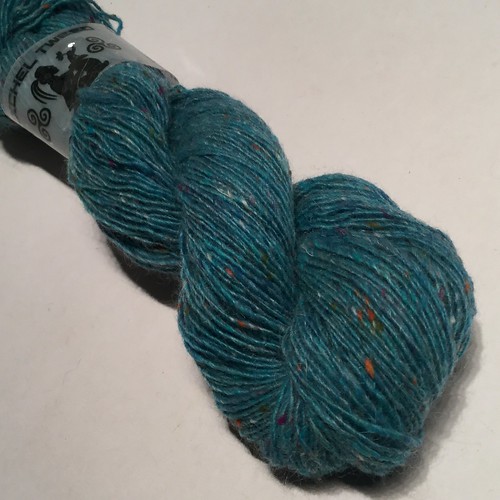
 Kingfisher
Kingfisher
( a fabulous Turquoise blue with accents of fern forest, kangaroo paw, Jacaranda and Grevillea)

Want to dye your own with easy to use acid dyes? I have been selling these Landscape dyes at my workshops and shows for a long time : They are extremely easy to use and come in great shades.

Wattle
(A beautiful sunshine yellow that goes so well with the kookaburra the silver grey)
(A beautiful sunshine yellow that goes so well with the kookaburra the silver grey)

 Kata Tjuta
Kata Tjuta (an intense pure red that goes well with the Kookaburra and the Wattle and the Amethyst colourway and soooooomany others)

 Kookaburra
Kookaburra(a beautiful silver grey with ochre accents that complement the dingo colourway)

 Dingo
Dingo( A beautiful warm honey ochre with pops of royal bluebell, kingfisher and kangaroo paw)

 Grevillea
Grevillea(a gorgeous raspberry base with pops of royal bluebell, flowering gum, grey and daintree)

Flowering Gum
( a gorgeous medieval warm red with bright red, kookaburra and fern forest accents)
( a gorgeous medieval warm red with bright red, kookaburra and fern forest accents)

 Fern Forest
Fern Forest ( a deep forest green with accents of bright red, dusky purple and daintree) )

 Jacarandah
Jacarandah ( a fabulous deep purple with accents of royal bluebell, daintree, grevillea and kingfisher )

 Wombat
Wombat( a fabulous deep walnut brown with accents of dingo and kookaburra)

 Kangaroo Paw
Kangaroo Paw ( a fabulous warm orange with accents of fern forest, royal bluebell and grevillea and dingo )

isn’t it gorgeous how the Kangaroo paw knits up?! )

 Royal Bluebell
Royal Bluebell ( a deep blue with accents of flowering gum, kookaburra and fern forest )

 Wallaby
Wallaby( a warm light brown with accents of soft blue and kookaburra)

 Daintree ( a soft green with accents of fern forest and dingo)
Daintree ( a soft green with accents of fern forest and dingo)
 Kingfisher
Kingfisher ( a fabulous Turquoise blue with accents of fern forest, kangaroo paw, Jacaranda and Grevillea)
Landscape dyes

100g tubs AU$12
250 g tubs AU$27
250 g tubs AU$27
Just contact me with the name of the colour you are after and I will get right back to you.
All my contact details are here:
Please don't hesitate to contact me at any time if you have any questions okay? Always happy to enable. All my contact details are to be found at the end of this week’s blog entry.
Have a fun weekend !!!
Have a fun weekend !!!
How To Order:
1. You can email me on ixchelbunnyart at gmail dot com or ixchelbunny at yahoo dot com dot au
2. Message me on facebook or
3. Message me on www.ravelry.com where I am ixchelbunny.
4. message me on Instagram where I am @ixchelbunny
I will email you right back with all your order details and payment methods.
Any questions? Any custom orders for yarn or dyeing fibre? : Please don’t hesitate to ask! Always happy to enable.
2. Message me on facebook or
3. Message me on www.ravelry.com where I am ixchelbunny.
4. message me on Instagram where I am @ixchelbunny
I will email you right back with all your order details and payment methods.
Any questions? Any custom orders for yarn or dyeing fibre? : Please don’t hesitate to ask! Always happy to enable.
Dates to put in your Calendar
keep your eyes out for any news on the
ixchelbunny Instagram feed and the IxCHeL facebook page!!
RABBIT ON !
((hugs))
Charly




No comments:
Post a Comment